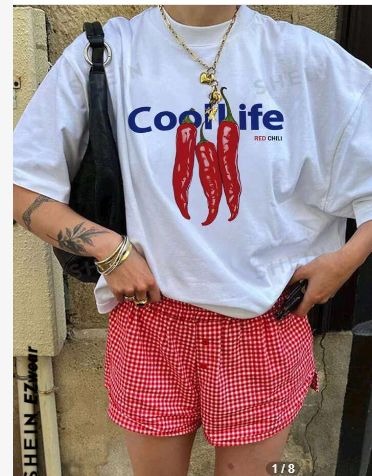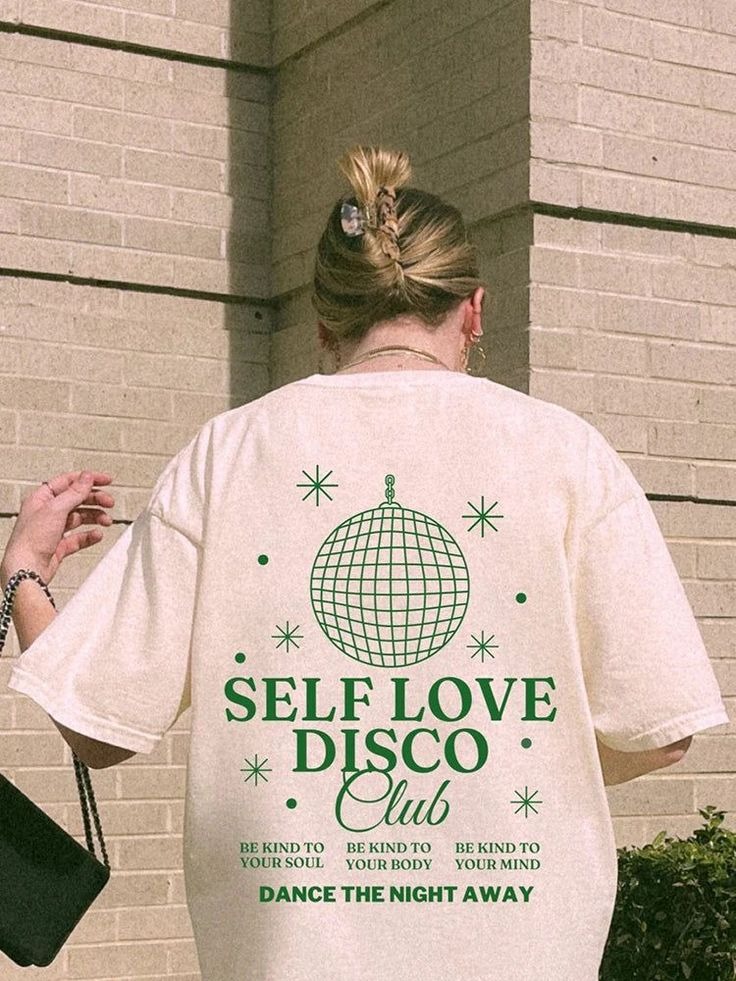The T-shirt stands as an enduring emblem of simplicity and versatility, tracing a lineage from practical undergarment to cultural icon. More than a mere article of clothing, it serves as a living testament to the changing tides of fashion, politics, technology, and personal narrative. Its transformation over the past century has mirrored broader shifts in society, reflecting the desires of wearers for comfort, self-expression, and ethical integrity. As we delve into the multifaceted saga of the T-shirt, we uncover the ways in which this humble garment continues to adapt and resonate in an ever-evolving world.
At its inception in the late nineteenth century, the knitted cotton undershirt emerged out of necessity rather than aesthetic aspiration. Laborers and industrial workers prized its lightweight breathability, using it to temper the stifling confines of heavier outerwear. The garment’s simplest form—fabric stretched in a straight, unbroken expanse with short sleeves branching from either shoulder—afforded a freedom of movement unheard of in the corseted silhouettes or stiff woolen uniforms of the day. Naval institutions quickly recognized this advantage, issuing the shirt to sailors as a practical solution against the harsh spray of the sea and the sweltering heat below deck. Through these decks and docks the T-shirt earned its name, derived from the unmistakable shape it assumes when laid flat, a designation at once literal and unpretentious.
The passage from underlayer to outerwear began in earnest in the early twentieth century, shaped by advances in textile manufacturing that facilitated mass production and drove down costs. Knit factories in industrial centers across Europe and North America churned out plain, affordable shirts that migrated from barracks to backyards, from ships to city streets. Yet the shirt’s gravitational pull into mainstream consciousness would hinge upon its appearance in the burgeoning medium of motion pictures. Audiences glimpsed their favorite stars in simple knit tops—heroes perspiring under the sun, heartthrobs reclining in modest attire—and saw in those shirts a symbol of relaxed modernity. The throwaway aesthetic of the shirt, free from ornamentation and corsetry, resonated with a generation yearning for informality and authenticity.
Following the upheaval of two world wars, returning veterans brought with them a profound shift in dress preferences. No longer content with constricting fashions, they adopted the T-shirt as a badge of leisure and egalitarianism. Paired with denim or khaki, the shirt became the de facto uniform of youth, a blank slate upon which personal ideals and affiliations could be inscribed. It was during this era that screen-printing techniques matured, enabling artists and entrepreneurs to imprint slogans, graphics, and logos onto the cotton expanse. Small shops and roadside stands began offering custom prints, allowing local bands, political movements, and small businesses to broadcast their messages. Thus did the T-shirt evolve into a mobile billboard, a wearable proclamation of identity and conviction.
The cultural revolution of the 1960s and 1970s cemented the T-shirt’s role as a platform for protest and social commentary. Young activists rallied at marches donning shirts emblazoned with peace symbols and demands for justice. Musicians sold concert tees as tangible connections between artist and audience, fostering a sense of community beyond the confines of the stage. In the decades that followed, designers harnessed the shirt’s democratic potential, crafting limited-edition collaborations that blurred the lines between streetwear and high fashion. Luxury houses introduced premium knits and avant-garde cuts, while underground labels championed DIY ethos and handcrafted details. The T-shirt had transcended its utilitarian roots to occupy a liminal space between art object and everyday essential.
Concurrently, the relentless pace of technological innovation reshaped the T-shirt’s material and aesthetic possibilities. Synthetic fibers and performance blends emerged, catering to athletes and outdoor enthusiasts seeking moisture wicking and UV protection. Digital printing revolutionized graphic reproduction, offering limitless color ranges and intricate designs at relatively low volumes. This democratization empowered independent artists to bring niche creations to market, spawning a proliferation of micro-brands and online boutiques. Meanwhile, advancements in dye chemistry reduced the environmental toll of coloring vast yards of fabric, even as consumers began demanding transparency in supply chains and a commitment to ethical labor practices.
By the twenty-first century, critical scrutiny of the fashion industry’s social and ecological footprint had reached a fever pitch. Conventional cotton cultivation, notorious for its heavy water consumption and pesticide usage, came under fire. Fast-fashion giants faced allegations of labor exploitation, prompting industry incumbents and newcomers alike to explore sustainable alternatives. Organic and Fairtrade cotton certifications gained traction, while recycled polyester and blends of regenerative fibers provided innovative material solutions. Closed-loop manufacturing models cropped up, aiming to capture and repurpose textile waste. Brands instituted take-back and repair programs, incentivizing consumers to extend the lifespan of their garments. Against this backdrop, the T-shirt served as both exemplar of overconsumption and beacon of circular design.
The T-shirt’s narrative extends beyond material considerations into the realm of digital fashion. Augmented reality applications now allow shoppers to preview virtual tees on their own forms, adjusting fit, hue, and graphic placement in real time. Non-fungible tokens (NFTs) grant provenance to limited-edition designs, enabling wearers to showcase unique digital collectibles in virtual social spaces. Avatar outfitting in online games and metaverse platforms has given rise to a new era of style, where intangible T-shirts can command high prices and confer status among digital peers. These ephemeral garments blur the boundary between the physical and the virtual, opening avenues for designers to monetize creativity without the overhead of physical production.
Yet even as the frontier of digital dress expands, the tactile appeal of a well-worn cotton tee remains irreplaceable. The familiar softness, the gentle fray at the seams, the way the fabric molds itself to contours over months of wear—these are sensations that no pixel can fully replicate. This sensory connection has inspired tactile experimentation among designers and technologists. Biofabrication ventures pursue lab-grown textiles, cultivating cellulose or protein fibers without traditional agriculture. Wearables embedded with conductive threads monitor biometric data, transforming the T-shirt into interactive interface. Phase-change materials promise adaptive thermal regulation, enabling the same garment to insulate in cold and cool in heat. In each instance, the T-shirt’s essential ethos of comfort and accessibility anchors cutting-edge research.
Globally, the T-shirt has woven itself into countless cultural fabrics, each thread reflecting local traditions and histories. In West African markets, imported blanks become canvases for vibrant tie-dye and wax-resist patterns, melding global commerce with centuries-old textile customs. In Japan, the philosophy of wabi-sabi influences intentional distressing and asymmetry, elevating imperfection into aesthetic virtue. In Latin America, community workshops stencil political messages onto shirts for grassroots campaigns, reinforcing the garment’s role as catalyst for civic engagement. Across Australia and New Zealand, indigenous artists reclaim the shirt as medium for storytelling, printing motifs that honor ancestral narratives. These localized inflections enrich the T-shirt’s global lexicon, ensuring its constant reinvention through regional creativity.
Economically, the T-shirt underwrites a vast ecosystem of creators, manufacturers, and retailers. Screen-printing cooperatives provide livelihoods to artisans and small business owners. E-commerce platforms enable direct-to-consumer sales that bypass traditional retail channels, fostering intimate brand-community relationships. Crowdfunding campaigns finance innovative startups exploring biodegradable fabrics or modular garment systems. Subscription boxes deliver curated selections of ethically produced tees to doorsteps, satisfying consumers driven by convenience and conscience alike. In volatile market climates, the T-shirt’s low price point and universal appeal insulate it from broader economic turbulence, cementing its status as recession-resilient staple.
Academic and institutional interest in the T-shirt has surged alongside its cultural prominence. Universities in fashion studies dissect the semiotics of slogans and graphics, examining how imagery conveys political alignment or subcultural belonging. Museums mount retrospectives of landmark graphic tees, chronicling their role in pivotal social movements from anti-war protests to climate marches. Anthropologists use the garment to study consumer behavior and identity formation, while sociologists track its diffusion across demographic groups. Artists incorporate deconstructed shirts into multimedia installations, exploring themes of memory, loss, and transformation. In cataloging the T-shirt’s myriad iterations, scholars affirm its significance as both artifact and agent of social change.
As we contemplate the decades ahead, speculative scenarios paint the T-shirt as green energy harvester, pollution scrubber, and health-monitoring sensor. Researchers envision shirts woven with perovskite solar fibers, harvesting photons to charge portable devices. Other projects embed probiotic coatings that neutralize airborne toxins or emit antimicrobial compounds to inhibit pathogen growth. Garments may one day display real-time biometric readouts, guiding wearers toward optimal fitness regimens or alerting them to health anomalies. Despite such futurist projections, the garment’s core identity as a comfortable, accessible, and expressive item of daily wear will persist, grounding innovation in the primal delight of soft fabric against skin.
The T-shirt’s greatest legacy may lie in its capacity to unite. In an increasingly polarized world, it offers a shared starting point: everyone has worn one, everyone understands its simplicity, and everyone recognizes its potential for meaning. Whether donned to signal allegiance to a sports team, to champion a political cause, or to commemorate a personal milestone, the T-shirt transcends barriers of language, geography, and class. Its blank front invites individual narrative, and its communal ubiquity fosters collective identity. In classrooms, concert halls, protests, and boardrooms, the shirt remains a constant, a reminder that our stories often unfold on the most unassuming canvases.
To wear the T-shirt is to engage with a continuum of history, innovation, and creativity. It honors the ingenuity of early industrial knitters, the audacity of activists who printed messages of dissent, the artistry of designers who elevated the plain shirt into high fashion, and the technological pioneers who reimagine fabric itself. It encapsulates the tensions between consumption and conservation, between physical reality and virtual possibility. Above all, it celebrates the universal human desire for comfort, belonging, and self-expression. As long as cotton fields sway in the breeze, as long as digital networks buzz with connectivity, and as long as individuals seek to tell their stories through what they wear, the T-shirt will endure.
In tracing the T-shirt’s past and projecting its future, we affirm a profound truth: great innovation often arises from humble origins. The unadorned jersey knit, conceived for practicality, has become a mirror for humanity’s highest aspirations and deepest convictions. Its form may remain consistent, but its meanings multiply endlessly—each print and wear an echo of collective imagination. The story of the T-shirt is neither complete nor static; it is authored anew with every stitch, every print, and every embrace of its simple comfort. And so, the infinite canvas continues to expand, inviting each generation to inscribe upon it the narratives of their times.




Leave a comment